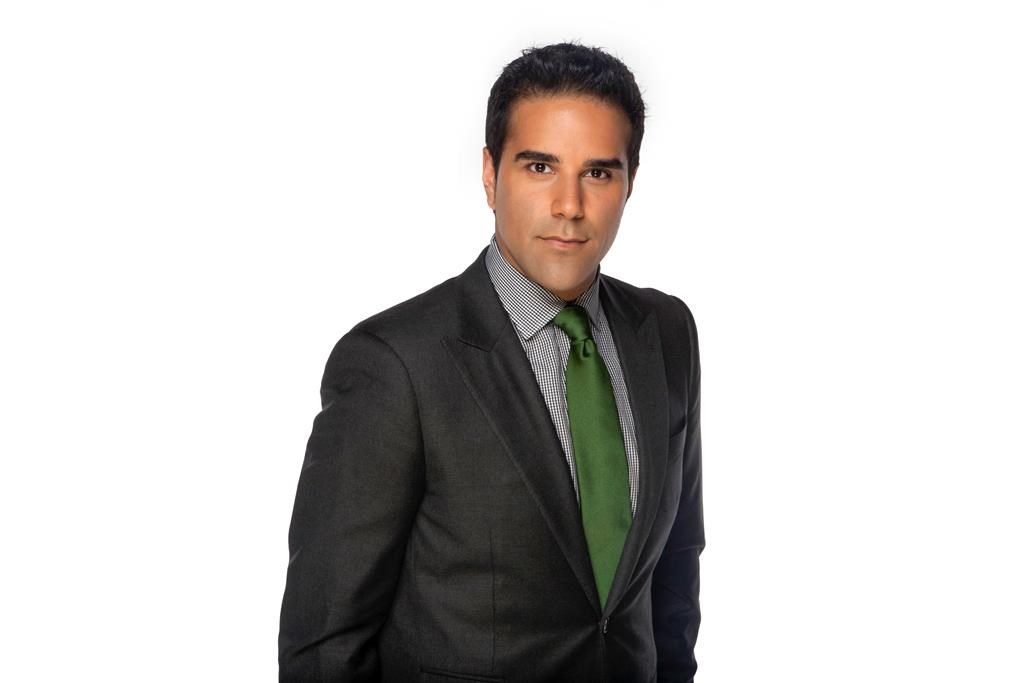TORONTO — Omar Sachedina’s promotion to chief anchor at CTV National News should have been a win for representation in Canadian media, but observers say the controversy surrounding his predecessor Lisa LaFlamme’s departure overshadowed a momentous occasion.
It was “a stolen moment” in which both a decorated woman and an accomplished man of colour have been robbed of significant benchmarks in their careers, said Brent Jolly, president of the Canadian Association of Journalists.
“This should be something that was being celebrated,” he said.
“And yet, unfortunately, the synchronizing of the announcements doesn’t do him as much service as it could.”
Bell Media issued a press release Monday saying that after 35 years, LaFlamme was leaving the broadcaster. Less than half an hour later, Sachedina was named as her replacement.
The ousted lead anchor turned to social media, where she said in a video she was first informed of the decision on June 29, adding she felt “blindsided” by what was described by executives as a “business decision.”
LaFlamme also missed out on a career milestone when she was pulled from the airwaves without an official sign-off on the CTV broadcast she led for more than a decade.
The gravity of Sachedina’s new position in the upper ranks of Canadian television was also diminished.
As CTV’s national affairs correspondent, the Vancouver-born journalist takes the helm at Canada’s most-watched evening newscast having already held a prominent role there. He is of Indian descent with parents from Uganda. Those details were largely overlooked in the controversy around LaFlamme’s sudden ousting from the network.
Sachedina marched through appearances on Bell Media-owned channels where the interviewers largely avoided the controversy around his appointment, while he spoke optimistically about the future of the newscast.
Neither LaFlamme nor Sachedina responded to requests for comment. Bell Media did not respond to questions about its handling of the announcement.
Nana aba Duncan, an associate professor and Carty Chair of Journalism, Diversity and Inclusion Studies at Carleton University, said the announcement was handled poorly and tossed Sachedina into a position where he’d face heightened scrutiny.
“Now there’s this added pressure that this person is maybe being put there for a diversity reason, and that’s unfair to him,” she said.
LaFlamme also didn’t get the respect she deserves, Duncan said.
Usually, an outgoing anchor would have the chance to say goodbye to their viewers in a live sign-off, along with a retrospective on their work. Peter Mansbridge was afforded nearly a year of runway before he left his job at CBC’s “The National” while Lloyd Robertson was toasted for his more than 40 years at CTV when he retired in 2011.
“There’s usually time, and that time wasn’t taken here,” Duncan said. “To me, it shows a lack of care and fairness for both of them.”
The controversy over Sachedina’s new role is the latest play in a game of “diversity chess” in Canadian broadcasting, said Pacinthe Mattar, a Toronto-based journalist.
The way it tends to unfold, she said, is a person of colour is hired to effectively gloss over the departure of a high-profile personality at the company.
“I think it’s a pattern,” said Mattar, who wrote about the experiences of racialized journalists in her 2020 Walrus article “Objectivity Is A Privilege Afforded to White Journalists.”
“(It’s) people being turfed, losing their jobs or getting fired, and then in their place suddenly there is this younger racialized person who’s going to be at the helm instead.”
She pointed to Tyrone Edwards, who in 2020 was appointed co-host of CTV’s “eTalk” when Ben Mulroney announced he was leaving to make room for “diverse voices.” Around the same time, Bell Media cut ties with Mulroney’s wife, stylist and host Jessica Mulroney, for behaviour they said conflicted with its “commitment to diversity.”
A few years earlier, rapper Shad became the host at CBC’s radio show “Q” as Jian Ghomeshi faced sexual assault charges for which he was acquitted in 2016. Shad parted ways with the show a year and a half after taking the role, something he later said was not his decision.
Mattar believes these examples speak to a cyclical problem in Canadian media.
“There’s very little runway for highly visible, racialized people … to actually grow into their roles,” she said.
She added that the treatment of LaFlamme only speaks further to the troubling nature of calls being made by leadership.
“You’re looking at one of the most respected, celebrated and awarded white women journalists — and she gets handled this way?” she said.
“I don’t think it’s a win for inclusion or diversity at all. It’s just window dressing.”
Leaders need to be aware that employees are becoming more conscious of how they’re being treated — or mistreated — on the job, Duncan added.
Employers need to recognize a younger generation of journalists are coming into the job more attuned to mental health in the workplace and less likely to accept “that’s just how it is” reasoning, she added.
“It’s not just in journalism, but everywhere,” she said.
“People who are going into the workforce are looking for their employers to care — not just to say that they care, but to genuinely show it in some way. And this flies in the face of that.”
However, Duncan said she remains hopeful that progress can be made in journalism.
“We have to change it systemically,” she added.
“And that means folks at the top have to start thinking about how people are brought on and how people leave.”
This report by The Canadian Press was first published Aug. 17, 2022.




